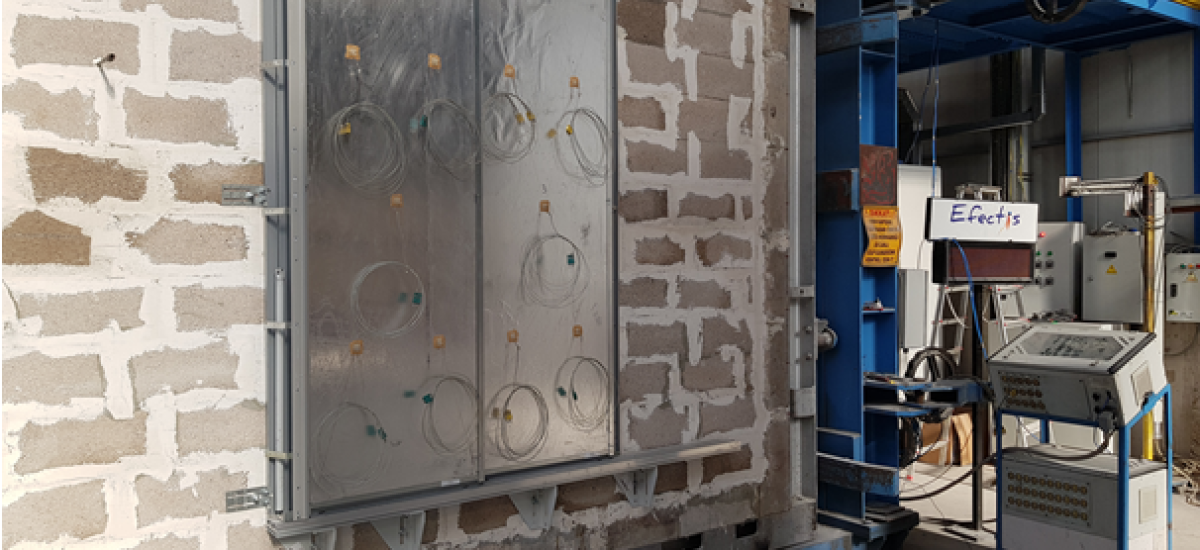2/3/2020
Fire Resistance Tests of Elevator Landing Doors
A further fire resistance test has been successfully carried out for our valued customer Otis Elevator Company (Russia) in our furnace according to the EN 81-58 standard (Safety rules for the construction and installation of lifts – Examination and tests – Part 58: Landing doors fire resistance). These fire-resistant lift landing doors are found throughout the world. Their essential feature is to satisfy the fire resistance requirements of the fire safety standards for buildings.
A specific harmonised standard for the testing of fire-resistant lift landing doors was adopted in 2003. Standard EN 81-58 was developed by the European Committee for Standardization following a mandate given by the European Commission under the Lifts Directive. It specifies a method for testing the integrity of lift landing doors intended to provide a barrier to prevent a fire from spreading from the landing to the floors above through the lift shaft. It also includes a classification for lift landing doors.
To follow the European requirements, Otis Elevator Company (Russia) had its insulated double leaf telescopic doors tested in accordance with EN 81-58:2018 achieving an EI 30 (30 minutes for Integrity and Insulation). The classification was carried out in accordance with EN 13501-2.
Integrity (E): is satisfied as long as the leakage rate per metre width of the door opening does not exceed 3.0 m3/(min·m), not taking into account the first 14 minutes of the test. Integrity is considered lost by the occurrence of sustained flaming at any time during the test period. Sustained flaming is flaming for more than 10 seconds.
Thermal Insulation (I): is no longer satisfied when the average temperature rise exceeds 140 °C.
For more information, please contact turkiye@efectis.com

